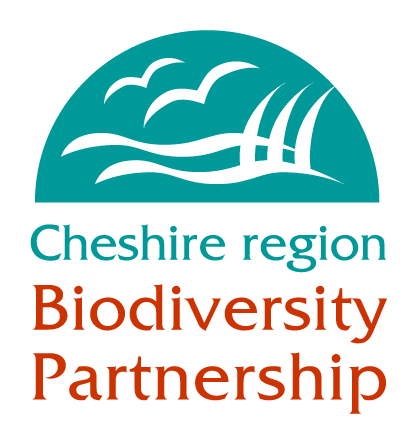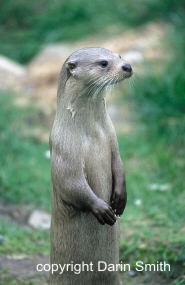
 |
WELCOME TO CHESHIRE BIODIVERSITY
|
|
| HOME | INTRODUCTION | SPECIES | HABITATS | PARTNERS | WHAT'S NEW | WHAT'S ON | OTHER INFO |
 The Local Biodiversity Action Plan for the Otter in Cheshire was first written in 1997 and has been updated annually since then. It aims to establish the current distribution of otters in the Cheshire region and restore otters to all catchments where they have been recorded since 1960.
The Local Biodiversity Action Plan for the Otter in Cheshire was first written in 1997 and has been updated annually since then. It aims to establish the current distribution of otters in the Cheshire region and restore otters to all catchments where they have been recorded since 1960.
Since 1994 there has been much conservation effort in the region directed at this shy and elusive animal. Between 1994 and 2001, as part of the Cheshire Wildlife Trust’s Otters and Rivers Project, extensive otter survey work was carried out, information booklets, leaflets and posters were produced, a database of otter records was developed and artificial otter holts and havens were constructed, amongst many other things.
Despite all this work, the results of the Fourth National Otter Survey (2000-2002), published in 2003, revealed that the North West Region had one of the lowest increases in positive otter sites since the last national survey conducted in 1994. The results for the Weaver/Dane catchment in Cheshire showed no increase in otter distribution during this time. However, in other parts of England the story was much more positive, and the results of the survey overall showed a five-fold increase in otter distribution since the first national otter survey was carried out in the late 1970’s.
So, why haven’t more otters returned to their old haunts in Cheshire?
Well, there are still many threats which otters face in the region today. In Cheshire, we have a large road network, substantial areas of farming and industry, and huge development pressures on scarce land resources. Our recovering otters have a lot to deal with, including water pollution from agricultural and industrial waste, habitat loss from unsympathetic development and road traffic accidents. In fact, road deaths account for the majority of otter deaths, particularly in areas where otter numbers are recovering, and PCB’s and heavy metal build-up in fish stocks is thought to be significantly reducing the life expectancy of otters in the wild.
By 2010 the Wildlife Trusts nationally aim to restore otters to every river system and coastal area where they have been recorded since 1960.
At a local level we have an active group of volunteers and conservation agencies who will be implementing the targets and objectives within the Otter LBAP. The main aims over the coming months will be to carry out extensive survey and monitoring work along our rivers and canals using an army of 40 trained volunteers to determine the distribution of otters within Cheshire.
During 2004 we have produced a new otter and mink identification and recording card, the “Know Your Otter” card with funding from Chester Zoo and the Environment Agency. 7,500 cards have been printed with over 5,000 distributed across the region to date. Any records received will be stored at rECOrd, the local records centre, and used to inform local conservation projects.
Further funding from Chester Zoo has provided money to buy a microscope to carry out analysis of otter spraint for dietary studies as well as infra-red video equipment to monitor otter activity in and around holts.
We still have much to learn about otters and lots of practical conservation work to carry out in Cheshire over the next few years. The following words, spoken by David Bellamy sum it up for me,
“The gradual return of the Otter shows us that we can turn around the fortunes of our wildlife. However, there is no room for complacency, there is still a lot to do and many battles to be won to ensure that the Otter continues to make a comeback”.
How true that is!
Fiona Mahon, past Chair of the Cheshire region Otter LBAP Action Group.
| HOME | INTRODUCTION | SPECIES | HABITATS | PARTNERS | WHAT'S NEW | WHAT'S ON | OTHER INFO |
|